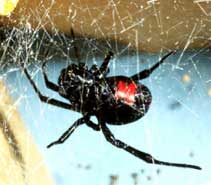Tuh-duh! I completed a gravel path in an area I like to call our wilderness garden in Desert Aire. The plan is to add more walking paths around our two maple trees. A neighbor has called it an arboretum. Many thanks, but it's truly a work in progress. With a park bench placed just so, who knows, it could be a small park. I regret leaving behind two concrete garden benches at our previous home in eastern Washington. In an effort to downsize, and not wanting to deal with two heavy benches at the time, we now must spend double to replace. Everything has gone up in price! This area also needs a small fence, to keep the tumbleweed from blowing in from the west. You'll notice quite a pile of this in the photo on right. Sigh...more work to do. But stay tuned. When everything leafs out, especially the mimosa (out of view on left), it's a lovely view.
When we first moved to Desert Aire (taking on .6 acres of mostly undeveloped land), the "wilderness" area was my biggest challenge as a gardener. The previous owner had chosen to use the area as a dumping ground for rocks, many of which were quite large. Putting on our thinking caps, Vince decided to use the rocks to widen the road, and so, he built the perfect Scottish wall.
Meanwhile, I explored gardening books and online designs for plant layout. I eventually decided to add a berm in front for privacy, which became home for 2 mugo pines, 2 junipers, 1 pine tree, and smaller evergreen plants in between. “Several 'tiger eyes” staghorn sumacs, 1 blue spruce, 1 mimosa tree (gifted by a neighbor), kinnikinnik groundcover, barberry shrubs, spirea shrubs, 2 more pine trees, 1 fig tree, and two maple trees were planted in the rear and on the sides. Phew! That's a lot of planting.
It's been slow going, as most of the plants were small at first, but slowly everything has taken off after five to seven years of growth. We still have an excess of native rabbit brush and bunch grass (it grows everywhere), which I plan to dig out soon. One nice thing about gravel here is if you place down weed control fabric underneath and have the gravel sprayed, the weeds give up. (Thanks, Russell Landscaping for helping us control the weeds). You can also omit the fabric cover, but only if the gravel is quite deep, three to four inches.
So take a look. I'm patting myself on the back today. 😁








